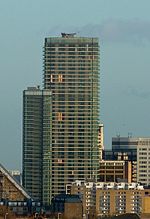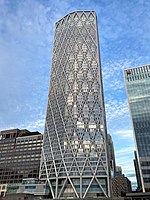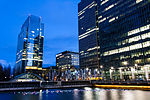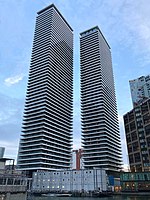Landmark Pinnacle
Buildings and structures in the London Borough of Tower HamletsCanary Wharf buildingsMillwallSkyscrapers in the London Borough of Tower Hamlets

Landmark Pinnacle is a 233-metre (764 ft) skyscraper constructed by developer Chalegrove Properties in Marsh Wall on the Isle of Dogs, London, United Kingdom. The 75-storeys Landmark Pinnacle is the tallest residential tower in the United Kingdom, the tallest residential building in western Europe and has more habitable floors than any other building in western Europe. As of 2023, Landmark Pinnacle is the fourth tallest building in the United Kingdom. The development was formerly known as City Pride, the same name as the public house it replaced, before a name change in 2016.
Excerpt from the Wikipedia article Landmark Pinnacle (License: CC BY-SA 3.0, Authors, Images).Landmark Pinnacle
Marsh Wall, London Isle of Dogs
Geographical coordinates (GPS) Address External links Nearby Places Show on map
Geographical coordinates (GPS)
| Latitude | Longitude |
|---|---|
| N 51.502667 ° | E -0.025417 ° |
Address
Marsh Wall 10
E14 9JF London, Isle of Dogs
England, United Kingdom
Open on Google Maps









